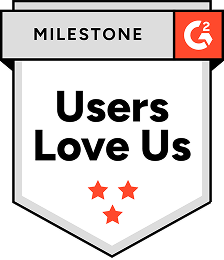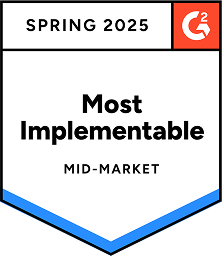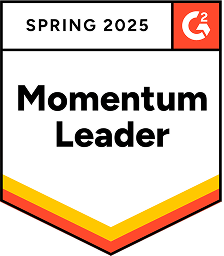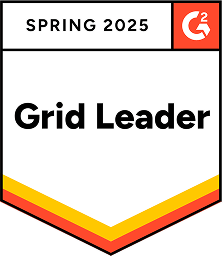How To Manage an SDR Team: Proven Methods From The Trenches
.jpeg)
I’m going to let you in on a pet peeve of mine…
It’s the proclamation that a certain channel or tactic is dead. Email, webinars, and direct mail have all, at various times, been proclaimed to be a thing of the past. The outbound sales development representative (SDR) model is no exception.
In the mid to late aughts, having an SDR team gave sales teams a competitive edge like no other. SDRs allowed sales teams to spend less time sifting through deals that would never close and more time with high-intent, ICP prospects.
Today, the SDR model is viewed through skeptical eyes with many proclaiming that this method of generating pipeline is done for and the way forward is SLG (Something-Led Growth).
We disagree. While the days of mass emails having a two digit conversion rate or blindly cold calling the phone book without a strategy are over, the SDR model is certainly not.
Outbound sales is alive and well in organizations that manage their SDR team well, organize them properly, and equip them for success. In this post, we’re going to explore the best practices for running these teams today and now rather than relying on playbooks and tactics that worked 20 years ago.
What your SDR team should be focusing on
If you ask someone how an SDR team should be organized you’re likely to get peppered with questions:
- Should they report to sales or marketing?
- Should team members be split by line of business or industry?
- Should we have one team focused solely on inbound or just outbound or both?
There are no answers to these questions that don’t change depending on the situation, organization, company size, etc.
What we can say is that what your SDR team is working on is far more important than whose budget they fall under (but if you really do need an answer to that question, where do they live, they should be under the functional area of the business they support most closely, lead by leader who has the best capacity to do so).
As the standard playbook for outbound became more and more stale over time, SDRs have been relegated to the role of appointment setters. “If you're only using your SDR team to set appointments and that's their only function,” Says Kevin Long, Director of Sales at Groundwork, “Then you're missing out on 80% of the value that that team could be providing.”
He continues to explain that though SDR teams should be spending most of their time on those outbound motions, there are other ways the team can contribute. One way is by encouraging team members to build a social media presence of their own. The team can be interacting with prospects, spreading awareness in new markets, and pushing new initiatives that the marketing team wants to kick off. They could even be calling current clients to get testimonials should you not have a large enough client success team.
What should the SDR manager be doing?
The role of SDR manager is a difficult one. No matter how much has changed in the role over the years the fact remains that they’re managing people whose role is really, really, really hard. SDRs are calling and emailing potential customers day after day and may get told no hundreds of times before they get to a yes. That’s mentally taxing, even for the thickest of skins.
As such, managers can’t be throwing textbook answers at people to “Always Be Closing” or “The Customer is Always Right.” Priority one for SDR leadership should be keeping the team motivated, engaged, and having fun because their daily activities can be the same, day in and day out.
Some ideas Long has used in the past involve setting up different contests, leaderboards, or having a “call out” period where people can challenge one another. “Having a leader that can think outside the box makes sure that even less tenured reps are having fun and being competitive in a positive way,” he said, “Having that positive competitiveness is invaluable to staying motivated to hit goals.”
That motivation is a huge leg up when most of the time, what your average rep is doing on a given day is the result of things that happened two to four weeks ago. Inputs create outputs. What this means is setting daily minimums of adding so many people into a sequence each day, or moving people to the next step of the sequence, and so on. By choosing the correct inputs, you’ll eventually end up with the right outputs so long as you focus on completing those inputs well.
For that reason, it’s important to build in feedback loops for the team so reps are able to adjust those inputs quickly. Daily standups are a helpful format to maximize feedback loops as that’s 5 chances to get feedback. If you only have a weekly meeting, your reps only get that once per week.
They don’t have to be long, formal or in-depth and, in fact, they shouldn’t be. They should quickly overview daily to-do’s, meetings, what the team is working towards, and want to accomplish.
“What I tell my reps is that they should aim to see three and set two, ” Long said, “See three appointments, and set two appointments. If you're keeping up that pace most days out of the week you’re going to have a nice healthy pipeline being created on the sales side.”
Building your SDR tech stack
Finding the sweet spot of how large your SDR tech stack needs to be can be difficult — and that difference can make or break a team. What your reps need to do their job comes down to a few key items.
They need a way to:
- Research prospects
- Reach out to prospects
- Track task progress
- Book meetings easily
- Know what to do next
With too few tools, your team is going to waste time doing tasks manually whether that’s sending emails, data entry, or having to cross reference information across systems. Too many and your team will be bogged down by administrative work and making sure that all the pieces are in the right place.
Fortunately, the last few years has seen technology evolve from just being an interface and has become more of a joint effort between rep and software. Training and ramping up your reps has never been quicker or more cost-effective.
Here are just a few of the ways AI sales tools can revolutionize your SDR team’s game:
- Generative AI platforms like Regie.ai can streamline prospect research and personalization email creation, to give your SDRs higher response rates to their sequences and cadences
- AI-powered chatbots can handle simple questions and sales inquiries, freeing up your SDRs to respond to more complex inquiries
- AI-powered sales enablement platform to take administrative tasks off your SDR’s plate
By harnessing the power of AI platforms and tools, you can increase efficiency, reduce costs, and improve your overall sales performance. So will you take advantage of these cutting edge solutions to bring your sales development process to the next level?
Give your SDRs a boost with Generative AI
With the impact that technology is having on the SDR model, many people are saying ever louder that the SDR model is now more obsolete than it was before ChatGPT came on the scene.
Generative AI and other similar technologies are not eliminating the role. They will not be replacing humans fully in those processes. But what it does have the potential to do is to change the skill set needed to do what SDRs are intended to do: prospect, qualify, and connect with prospects to drive pipeline.
With so many technologies in the market now, getting an understanding of what you need or want is difficult. For a better understanding of how AI can fit into your outbound sales workflows, check out our Official Guide to Generative AI.
“[AI] is going to empower those taking the time to leverage and embrace it,” Long said, “Those that do will be so much farther ahead than all their competitors.”
FAQs
Read more posts
View all BlogsNeed more help?
If you still have questions, make sure to check out our Help Center: there, you'll find all the tips & advice you'll need to get your team up & running with Regie.ai.









